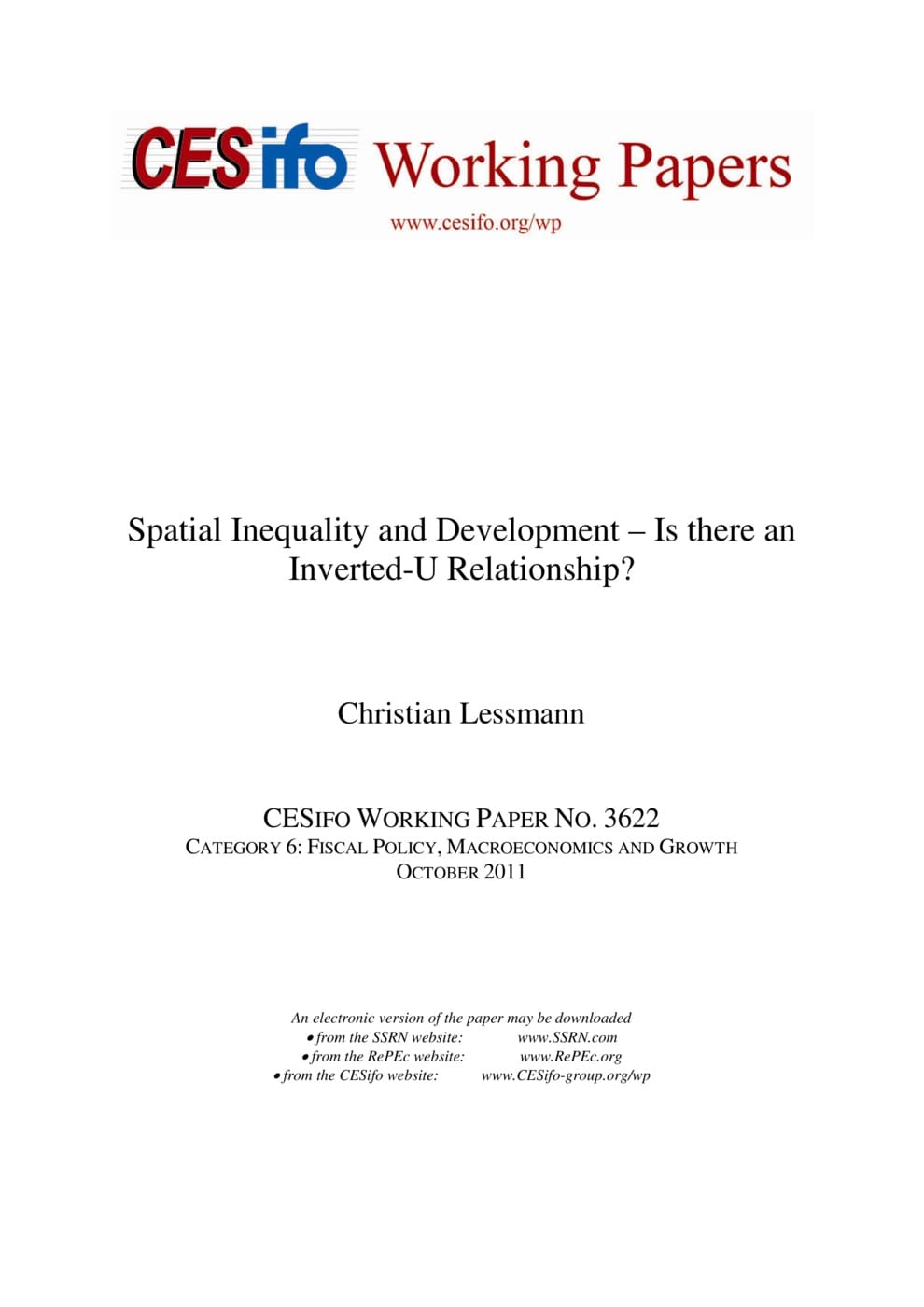Spatial Inequality and Development - Is there an Inverted-U Relationship?
CESifo, Munich, 2011
CESifo Working Paper No. 3622

This paper studies the hypothesis of an inverted-U-shaped relationship between spatial inequality and economic development. The theory of Kuznets (1955) and Williamson (1965) suggests that (spatial) inequality first increases in the process of development, then peaks, and then decreases. To test this hypothesis I have used a unique panel data set of spatial inequalities in 55 countries at different stages of economic development, covering the period 1980-2009. Parametric and semiparametric regressions are carried out using cross-section and (unbalanced) panel data. The results provide strong support for the existence of an inverted U, but importantly I also find spatial inequalities to increase again at very high levels of economic development. Although many factors may be contributing to this rise, one explanation rests on the process of tertiarization, i.e., the structural shift from industrial production towards a service base in the highest-developed economies.
Fiscal Policy, Macroeconomics and Growth
Empirical and Theoretical Methods